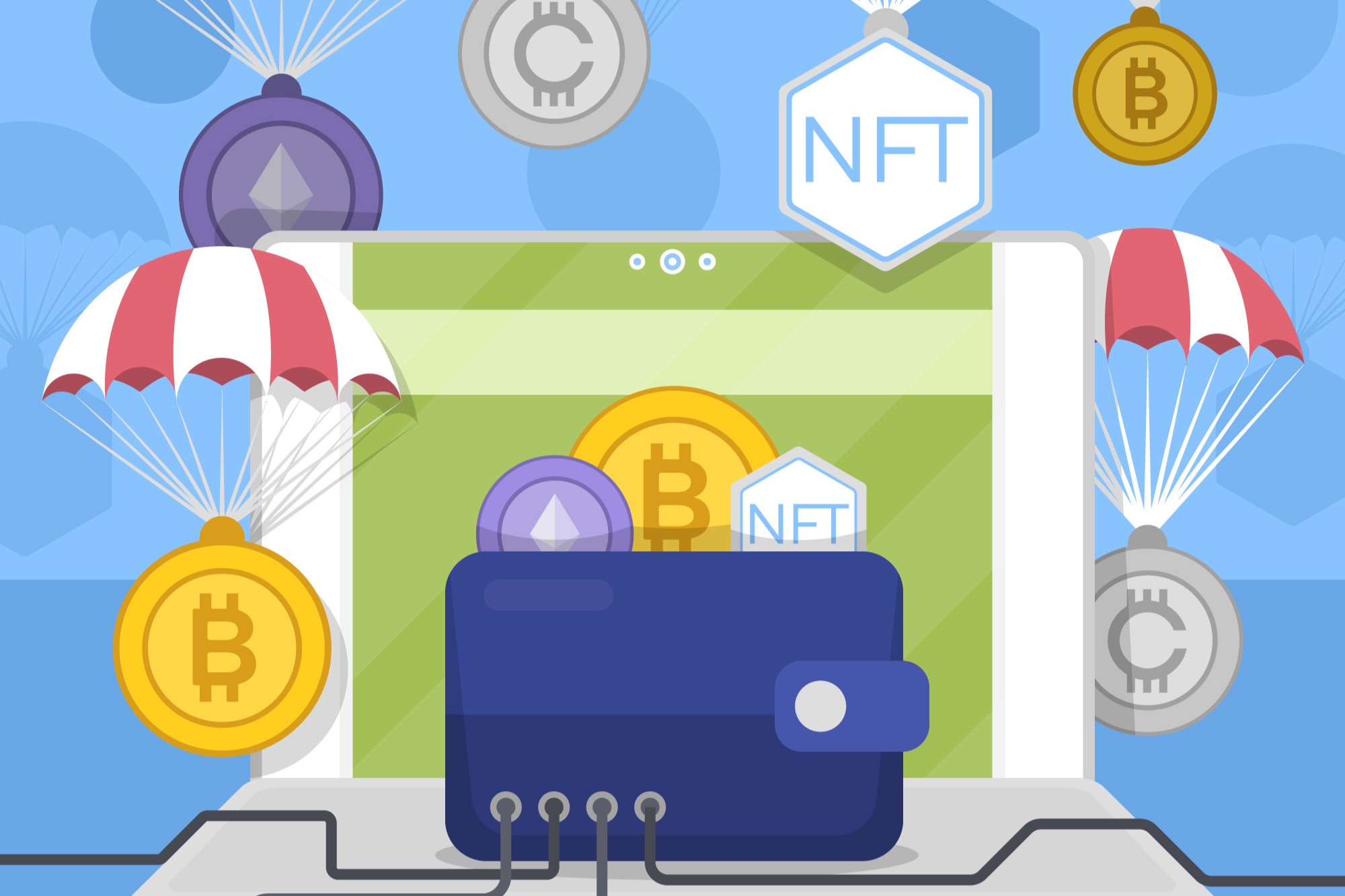Integrating crypto bots with wallets enhances convenience and efficiency in managing digital assets. This article explores the integration of crypto bots with various wallet solutions, from security protocols to user interfaces. Discover how seamless integration empowers users to automate trading, portfolio management, and asset diversification within their crypto wallets.
Overview of Wallets
Cryptocurrency wallets are essential tools for securely storing and managing digital assets in the decentralized landscape of blockchain technology. They come in various types, each offering distinct features to cater to different security and accessibility needs. Hot wallets, such as software wallets, are connected to the internet and provide convenient access for frequent transactions.
In contrast, cold wallets, like hardware wallets, store private keys offline, offering enhanced security against online threats. These wallets ensure that users maintain control over their cryptocurrencies while navigating the complexities of digital asset management in a secure and user-friendly manner.
Benefits of Integration
Integrating cryptocurrency trading bots directly with wallets provides numerous advantages for both traders and developers:
- Real-Time Transaction Execution:
- Bots can execute trades instantly based on predefined algorithms, taking advantage of market opportunities as they arise.
- This capability reduces latency in trade execution, crucial in volatile cryptocurrency markets where timing is critical.
- Enhanced Security Features:
- Integration allows for secure management of private keys within the wallet environment, minimizing exposure to potential security breaches.
- Bots can operate within the secure framework of the wallet, leveraging its encryption and authentication protocols for safer transactions.
- Simplified Portfolio Management:
- Users can manage and monitor their cryptocurrency portfolios more efficiently through integrated bots that automate balance tracking and asset allocation.
- Integration enables seamless portfolio rebalancing and diversification strategies, enhancing overall investment management capabilities.
These benefits underscore the synergies between automated trading strategies and secure asset management, offering users a comprehensive toolkit for navigating the complexities of cryptocurrency markets with confidence.
Technical Aspects of Integration
| Aspect | Challenges | Solutions |
| API Compatibility | Different protocols and formats between trading bots and wallet APIs. | Standardization efforts, development of middleware for seamless integration. |
| Security Protocols | Ensuring secure transmission of data and protection of private keys. | Implementation of encryption standards, multi-factor authentication (MFA) for enhanced security. |
| Scalability Issues | Handling large volumes of transactions and data processing efficiently. | Cloud infrastructure deployment, optimization of algorithms for faster processing speeds. |
- API Compatibility:
- Addressing protocol mismatches between trading bots and wallet APIs to facilitate smooth communication and data exchange.
- Developing middleware solutions that act as intermediaries to bridge the gap between different API formats.
- Security Protocols:
- Implementing robust encryption methods to safeguard transaction data and protect user privacy.
- Integrating multi-factor authentication (MFA) mechanisms to strengthen access controls and prevent unauthorized access.
- Scalability Challenges:
- Deploying scalable cloud infrastructure to handle increasing transaction volumes and data processing requirements.
- Optimizing algorithms used by trading bots to improve efficiency and reduce latency during high-demand periods.
These technical considerations are critical for ensuring reliable and secure integration of cryptocurrency trading bots with wallets, enabling users to effectively manage their digital assets while leveraging automated trading strategies.
Case Studies and Examples
Integrating cryptocurrency trading bots with wallets has been successfully implemented across various platforms, demonstrating significant improvements in trading efficiency and user experience. For instance, on platforms like Binance and Coinbase, traders can seamlessly link their trading bots with their respective wallets, allowing for automated trading strategies that execute trades swiftly based on predefined algorithms. This integration not only enhances the speed of transaction execution but also provides users with real-time insights into market movements and asset performance.
Furthermore, decentralized exchanges (DEXs) such as Uniswap and SushiSwap have integrated bots directly into their wallet interfaces. This integration enables users to leverage automated market-making strategies to provide liquidity pools continuously. By automating these processes, users can earn passive income while minimizing the manual effort required for liquidity management.
Moreover, institutional investors have adopted integrated solutions that incorporate sophisticated trading bots with secure custodial wallets. These solutions cater to large-scale trading operations by ensuring compliance with regulatory standards and offering enhanced security features. Such integrations enable institutions to execute complex trading strategies efficiently while maintaining control over their digital assets.
These case studies illustrate the diverse applications and benefits of integrating cryptocurrency trading bots with wallets, showcasing how this technology is reshaping the landscape of digital asset management and trading.
Challenges and Considerations
Integrating cryptocurrency trading bots with wallets presents several challenges and considerations that developers and users need to address:
- Technical Complexities:
- API Compatibility: Ensuring that trading bots can interact seamlessly with various wallet APIs, which may have different protocols and formats.
- Integration Issues: Handling technical complexities related to synchronizing data and transactions between bots and wallets.
- Security Concerns:
- Data Privacy: Protecting sensitive information such as private keys and transaction data from unauthorized access and cyberattacks.
- Authentication: Implementing robust authentication mechanisms to prevent unauthorized use of integrated systems.
- Regulatory Compliance:
- Legal Frameworks: Navigating regulatory requirements and compliance standards specific to automated trading and cryptocurrency transactions.
- Risk Management: Mitigating risks associated with regulatory changes and ensuring adherence to legal obligations.
- Operational Efficiency:
- Scalability: Scaling integrated systems to handle increasing transaction volumes and user demands without compromising performance.
- Cost Management: Balancing the costs associated with integrating and maintaining trading bots with the potential benefits gained from enhanced efficiency.
Addressing these challenges requires a comprehensive approach that combines technical expertise, robust security measures, regulatory awareness, and strategic planning. By proactively managing these considerations, stakeholders can optimize the integration of cryptocurrency trading bots with wallets to maximize operational effectiveness and user satisfaction.
Future Trends
The future of integrating cryptocurrency trading bots with wallets holds promising developments that could reshape how digital assets are managed and traded. One significant trend is the advancement of artificial intelligence (AI) and machine learning algorithms within trading bots. These technologies are expected to enhance bots’ predictive capabilities, enabling more sophisticated trading strategies based on extensive data analysis and market insights. This evolution could lead to more accurate decision-making and potentially higher returns for users.
Another emerging trend is the integration of decentralized finance (DeFi) protocols with trading bots and wallets. DeFi offers decentralized solutions for lending, borrowing, and trading cryptocurrencies, often through automated smart contracts. Integrating DeFi capabilities with trading bots could automate complex financial transactions and strategies, such as yield farming and liquidity provision, directly from users’ wallets. This integration could democratize access to advanced financial services while providing greater transparency and efficiency in managing digital assets.



